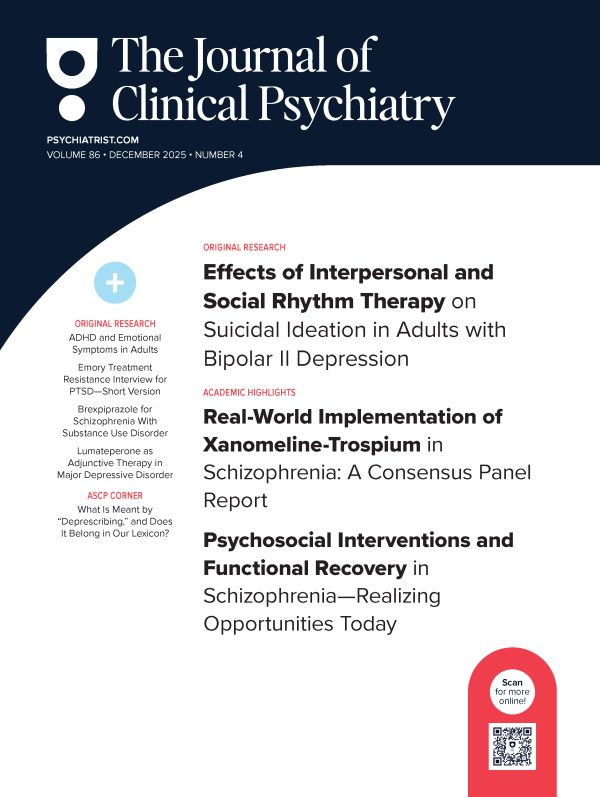Objective: The onset or worsening of sexual dysfunction is a common treatment-emergent side effect of antidepressant medications. Post hoc analyses of pooled data from placebo-controlled studies were utilized to assess sexual functioning in patients receiving duloxetine or paroxetine.
Method: Acute-phase data were obtained from four 8-week, double-blind, placebo- and paroxetine-controlled trials of similar design in which patients meeting DSM-IV criteria for major depressive disorder were randomly assigned to receive placebo (N = 371), duloxetine (40-120 mg/day; N = 736), or paroxetine (20 mg/day; N = 359). Pooling of data from these studies was anticipated during study design. This represented all available data from duloxetine studies in which the Arizona Sexual Experience Scale (ASEX) was administered both at baseline and endpoint. Long-term data were available from extension phases in 2 of these trials in which acute treatment responders received placebo (N = 129), duloxetine (80-120 mg/day; N = 297), or paroxetine (20 mg/day; N = 140) for an additional 26 weeks. Data were collected between March 2000 and July 2002.
Results: The incidence of acute treatment-emergent sexual dysfunction was significantly lower among duloxetine-treated patients compared with those receiving paroxetine (p = .015), although both rates were significantly higher than placebo ( p= .007 and p < .001 for duloxetine and paroxetine, respectively). Treatment group differences in the incidence of treatment-emergent dysfunction did not vary significantly by gender. In female patients, acute treatment-emergent sexual dysfunction was significantly lower in the duloxetine treatment group compared with the paroxetine treatment group (p = .032), with both rates being significantly higher than placebo (p = .049 and p < .001 for duloxetine and paroxetine, respectively). In the somewhat smaller group of male patients, acute treatment-emergent dysfunction did not differ significantly between duloxetine and placebo treatment groups, but the incidence was significantly higher in paroxetine-treated male patients compared with male placebo patients (p = .012). The long-term incidence of treatment-emergent dysfunction did not differ significantly between duloxetine-, paroxetine-, and placebo-treated patients.
Conclusion: In this analysis of pooled data, patients receiving duloxetine (40-120 mg/day) or paroxetine (20 mg/day) had a significantly higher incidence of acute treatment-emergent sexual dysfunction when compared with placebo patients. However, the incidence of acute treatment-emergent dysfunction for duloxetine was significantly lower than that observed for paroxetine.
Please sign in or purchase this PDF for $40.00.





